As a Windows 10 user, you may have noticed you’re always forced to install the Windows automatic updates (whether you like it or not). Whenever you’re working on your computer, Windows automatically updates the system, and you have to restart the system very often, spending so much time on updating and restarting. This’s frustrating, isn’t it?
Don’t worry, this article introduces the easy methods to stop Windows 10 update completely.
 and R at the same time, type appwiz.cpl, and click OK.
and R at the same time, type appwiz.cpl, and click OK.
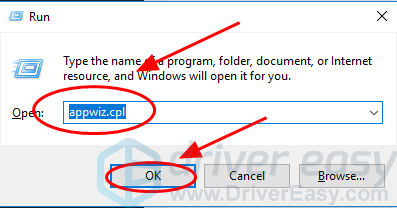 2) Find the Windows 10 Update Assistant in the listed programs, and right click on it, then select Uninstall.
3) Confirm the delete.
4) Open File Explorer, and click This PC.
5) If the Windows Update Assistant is installed by default when you install your Windows OS, go to the file where your system is installed, normally it’s This PC > C drive > Windows > Windows10Upgrade, then delete the Windows10Upgrade folder.
If the Windows 10 Update Assistant is installed separately, you can go to the location where the Windows 10 Update Assistant is saved, and delete the installation folder. It’s normally named as Windows10Upgrade.
6) Go to This PC > Windows, delete the folders named UpdateAssistantV2 and UpdateAssistant.
2) Find the Windows 10 Update Assistant in the listed programs, and right click on it, then select Uninstall.
3) Confirm the delete.
4) Open File Explorer, and click This PC.
5) If the Windows Update Assistant is installed by default when you install your Windows OS, go to the file where your system is installed, normally it’s This PC > C drive > Windows > Windows10Upgrade, then delete the Windows10Upgrade folder.
If the Windows 10 Update Assistant is installed separately, you can go to the location where the Windows 10 Update Assistant is saved, and delete the installation folder. It’s normally named as Windows10Upgrade.
6) Go to This PC > Windows, delete the folders named UpdateAssistantV2 and UpdateAssistant.
 After the full uninstallation of Windows 10 Update Assistant, restart your computer.
Then you can try the methods below to stop Windows 10 update and it should work.
After the full uninstallation of Windows 10 Update Assistant, restart your computer.
Then you can try the methods below to stop Windows 10 update and it should work.
 + R at the same time to invoke the Run box.
2) Type services.msc and press Enter.
+ R at the same time to invoke the Run box.
2) Type services.msc and press Enter.
 + R at the same time to invoke the Run box.
2) Type gpedit.msc and click OK.
+ R at the same time to invoke the Run box.
2) Type gpedit.msc and click OK.
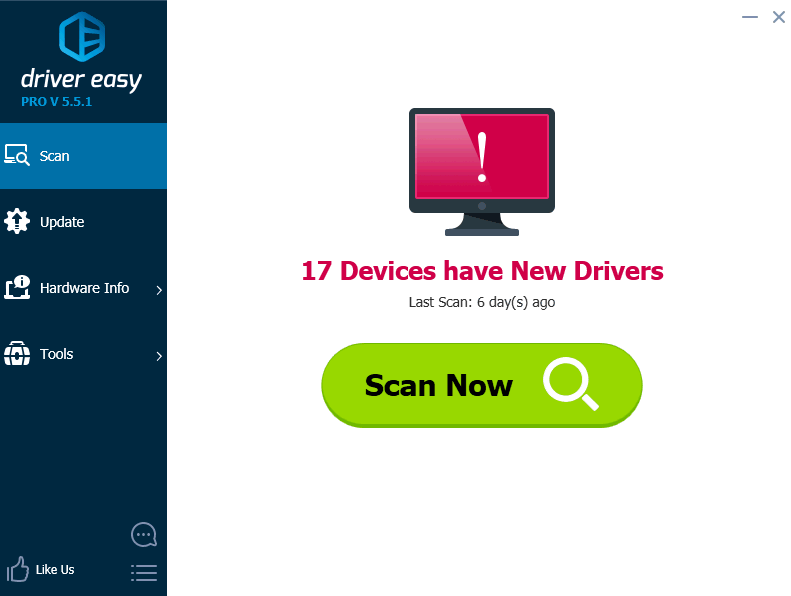 3) Click the Update button next to a flagged device to automatically download and install the correct version of this driver (you can do this with the FREE version).
Or click Update All to automatically download and install the correct version of all the drivers that are missing or out of date on your system (this requires the Pro version – you’ll be prompted to upgrade when you click Update All).
3) Click the Update button next to a flagged device to automatically download and install the correct version of this driver (you can do this with the FREE version).
Or click Update All to automatically download and install the correct version of all the drivers that are missing or out of date on your system (this requires the Pro version – you’ll be prompted to upgrade when you click Update All).
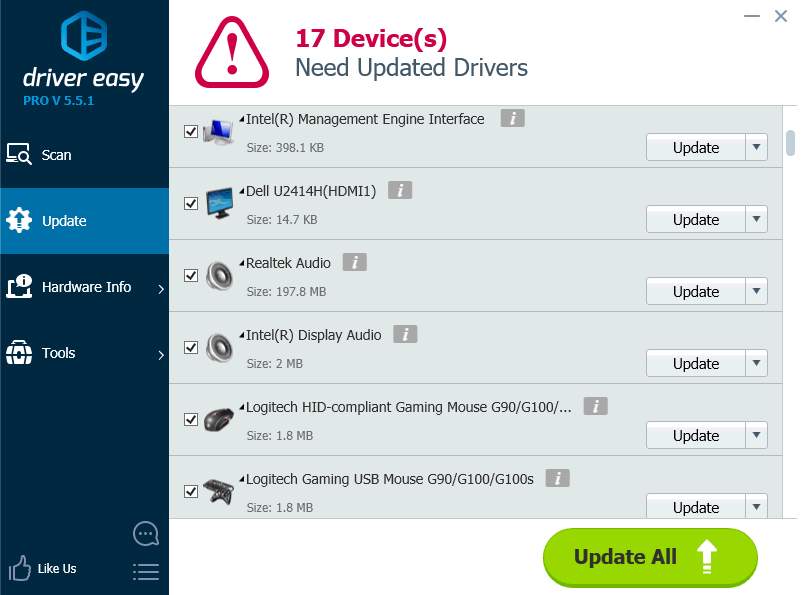 4) After updating, restart your computer to make it take effect.
4) After updating, restart your computer to make it take effect.
There are the helpful methods to stop Windows 10 update. Hope it works for you. If you have any questions, feel free to comment below and we will see what more we can do to help.
How Can I Disable Windows 10 Update?
Here are the methods you can try. You don’t need to try them all; just work your way down the list until you find the one that works for you.- Meter your network connection to stop Windows 10 update
- Disable Windows Update service to stop Windows 10 update
- Change Group Policy Settings to stop Windows 10 update
- Change Device Installation Settings to stop Windows 10 update
- Bonus Tip
Why I can’t stop Windows 10 auto update?
As indicated by Microsoft, for Home edition users, Windows updates will be pushed to the users’ computer and automatically installed. So if you’re using Windows 10 Home version, you can’t stop Windows 10 update. With Windows 8.1 and earlier versions, you can choose to update your Windows in the following four options: 1. Install updates automatically (Recommended) 2. Download Updates but choose when to install them 3. Check for updates but let me choose whether to download and install them 4. Never check for updates (Not Recommended) However, in Windows 10, these options have been removed and you can disable Windows 10 update at all.Completely uninstall Windows 10 Update Assistant
Sometimes you’ve tried the solutions below to stop Windows 10 update, but it fails to work in times. one of the possible reasons is that Windows 10 Update Assistant modifies the settings in your computer and Windows 10 auto update starts to work again. If you have Windows 10 Update Assistant installed in your computer, you should uninstall it completely. Note: if you don’t want to uninstall Windows 10 Update Assistant, you can disable it from Task Scheduler. Go to Task Scheduler >Task Scheduler Library > Microsoft > Windows > UpdateOrchestrator, then click Update Assistant in the right pane. Make sure to disable each trigger in Triggers tab. 1) Press the Windows logo key and R at the same time, type appwiz.cpl, and click OK.
and R at the same time, type appwiz.cpl, and click OK.
 2) Find the Windows 10 Update Assistant in the listed programs, and right click on it, then select Uninstall.
3) Confirm the delete.
4) Open File Explorer, and click This PC.
5) If the Windows Update Assistant is installed by default when you install your Windows OS, go to the file where your system is installed, normally it’s This PC > C drive > Windows > Windows10Upgrade, then delete the Windows10Upgrade folder.
If the Windows 10 Update Assistant is installed separately, you can go to the location where the Windows 10 Update Assistant is saved, and delete the installation folder. It’s normally named as Windows10Upgrade.
6) Go to This PC > Windows, delete the folders named UpdateAssistantV2 and UpdateAssistant.
2) Find the Windows 10 Update Assistant in the listed programs, and right click on it, then select Uninstall.
3) Confirm the delete.
4) Open File Explorer, and click This PC.
5) If the Windows Update Assistant is installed by default when you install your Windows OS, go to the file where your system is installed, normally it’s This PC > C drive > Windows > Windows10Upgrade, then delete the Windows10Upgrade folder.
If the Windows 10 Update Assistant is installed separately, you can go to the location where the Windows 10 Update Assistant is saved, and delete the installation folder. It’s normally named as Windows10Upgrade.
6) Go to This PC > Windows, delete the folders named UpdateAssistantV2 and UpdateAssistant.
 After the full uninstallation of Windows 10 Update Assistant, restart your computer.
Then you can try the methods below to stop Windows 10 update and it should work.
After the full uninstallation of Windows 10 Update Assistant, restart your computer.
Then you can try the methods below to stop Windows 10 update and it should work.
Way 1: Meter your network connection to stop Windows 10 update
Many people may not notice that there is a simple way to stop Windows 10 automatic updates. You can set your WiFi network as metered connection. So if your computer is connecting to WiFi, you can try this: 1) Click the Start button at the bottom left on your desktop, then click the Settings app.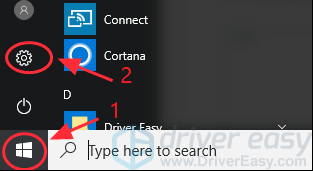
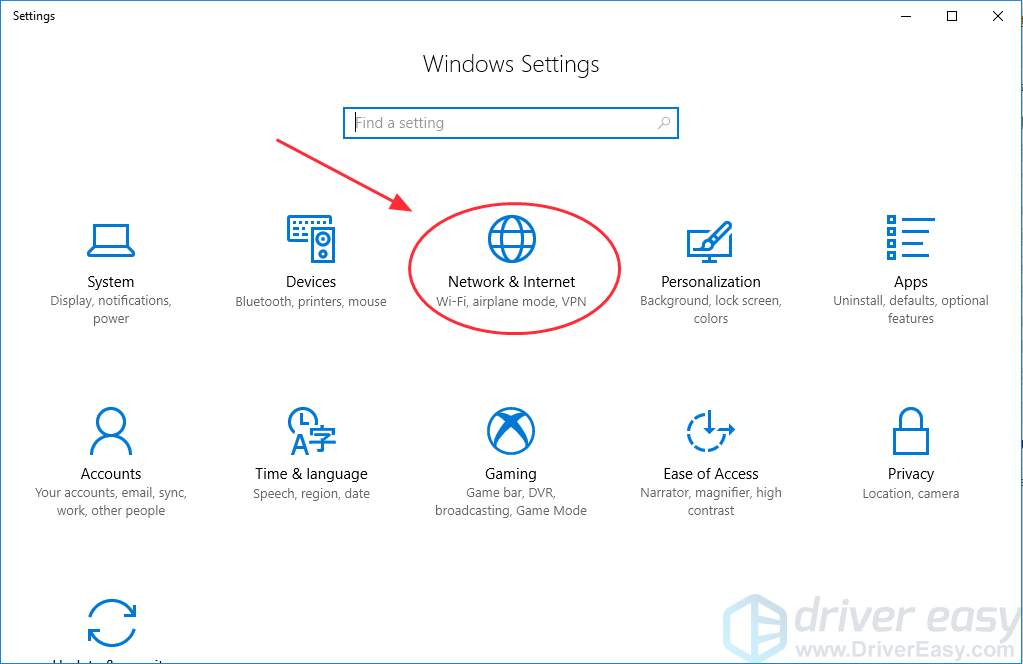
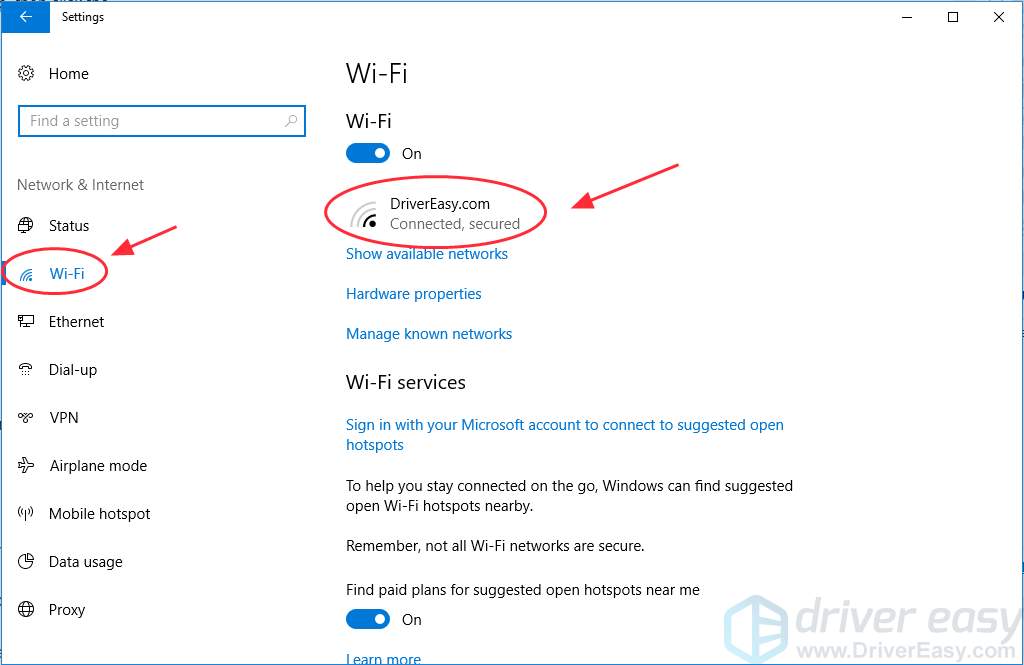
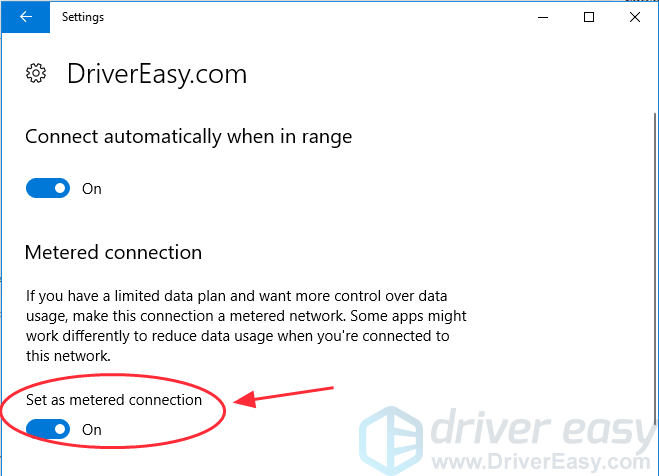
Way 2: Disable Windows Update service to stop Windows 10 update
Windows Update service can detect, download and install the Windows updates and programs. Once disabled, you can not use the Windows automatic update feature, and programs will not be able to automatic download and install. Some people find it impossible to disable Windows 10 update in the Windows Update service, and the settings changes every time your computer starts installing the Windows update. It’s likely caused by Windows 10 Update Assistant. If that’s your case, you should completely uninstall Windows 10 Update Assistant in your computer first. Once uninstall Windows 10 Update Assistant, you can start the steps below: 1) On your keyboard, press the Windows logo key + R at the same time to invoke the Run box.
2) Type services.msc and press Enter.
+ R at the same time to invoke the Run box.
2) Type services.msc and press Enter.
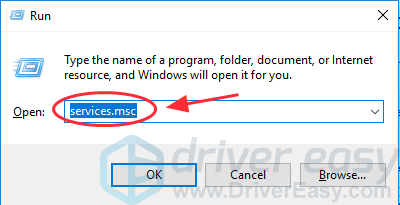
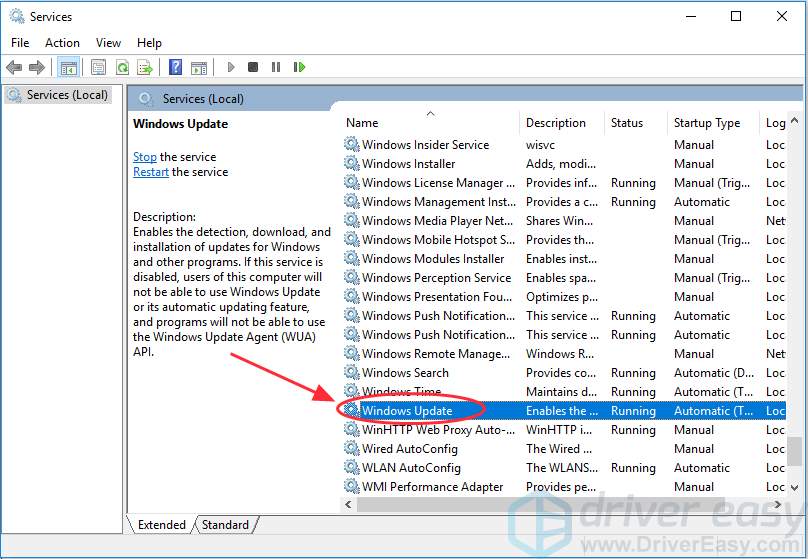
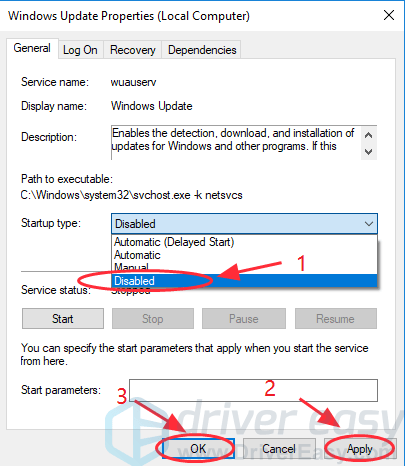
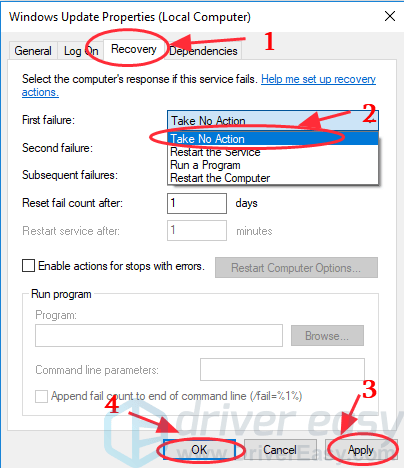
Note: If you disable the Windows Update service, your computer will not be able to download the updates. When you manually click to update, you will see a message that updates were not installed because computer was stopped. So if you want to update your Windows 10, you can go to the Windows Update service, and select Automatic to enable the service. Then you will be able to update your Windows.
Way 3: Change Group Policy Settings to stop Windows 10 update
You can also use the Group Policy Editor to change the settings to prevent Windows 10 from automatically updating.Kindly note that Group Policy is available in Windows 10 Pro and Enterprise, so if you’re using Windows 10 Home, Group Policy is not available in your computer, and you can try other methods.
1) On your keyboard, press the Windows logo key  + R at the same time to invoke the Run box.
2) Type gpedit.msc and click OK.
+ R at the same time to invoke the Run box.
2) Type gpedit.msc and click OK.

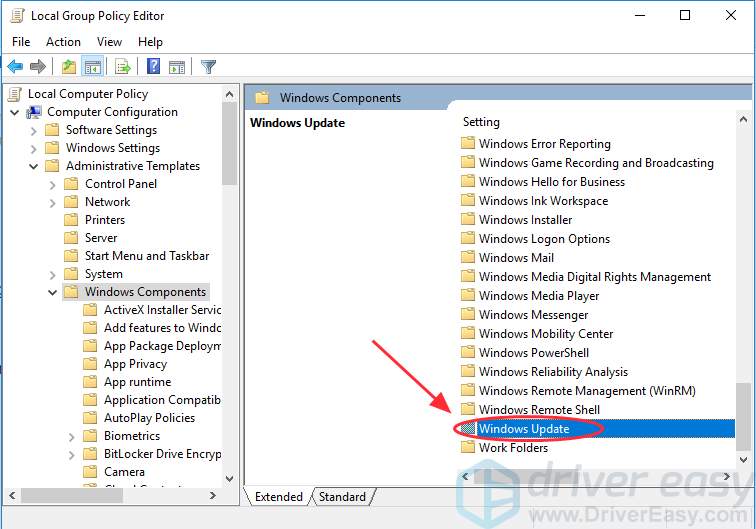
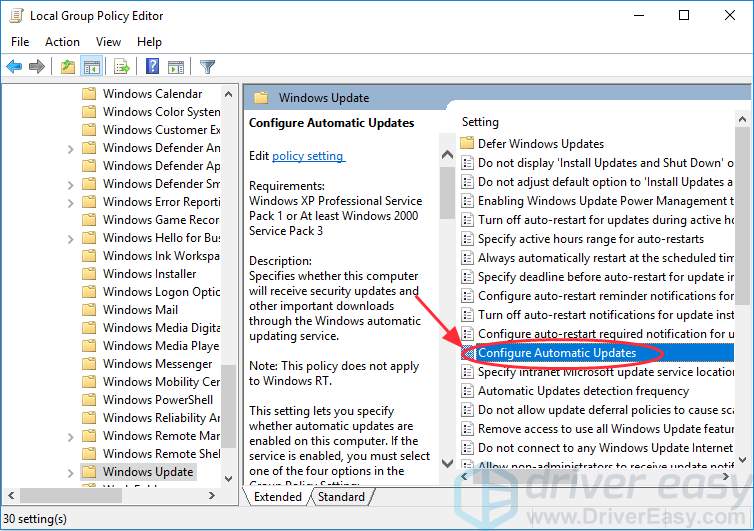
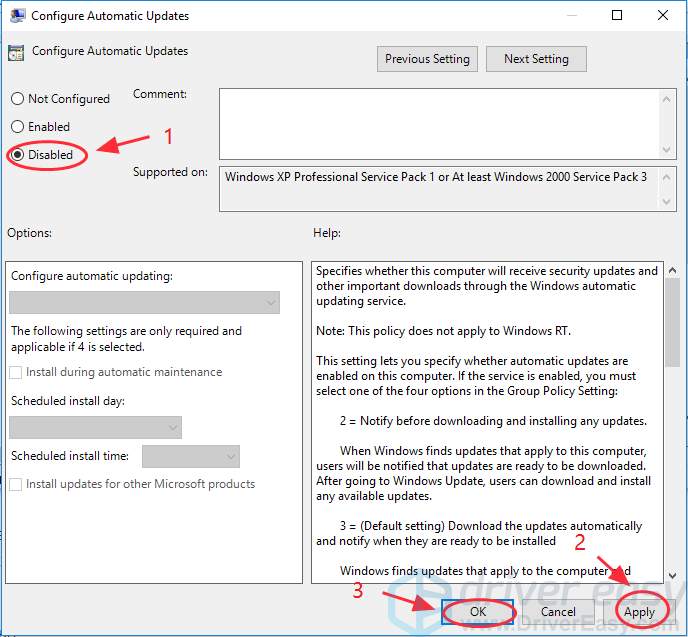
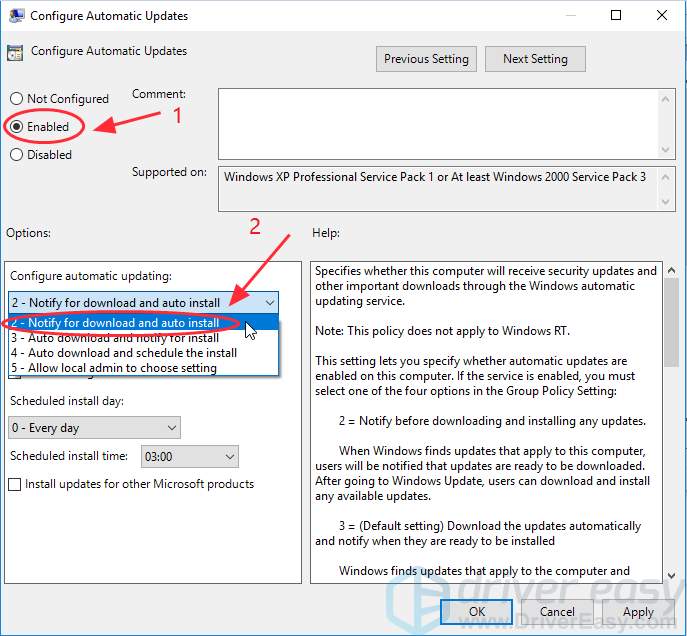
Way 4: Change Device Installation Settings to stop Windows 10 update
If you don’t want to automatically update your device drivers in your computer, you can try these steps: 1) Type control panel in the search box, and click Control Panel.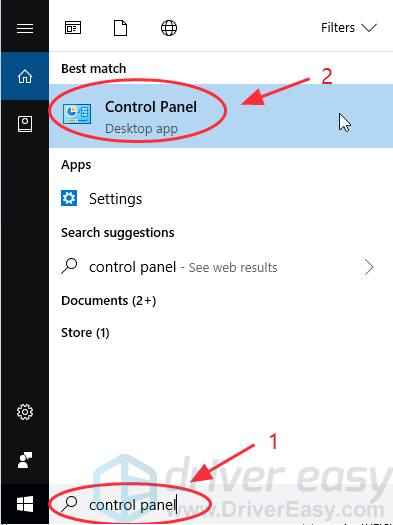
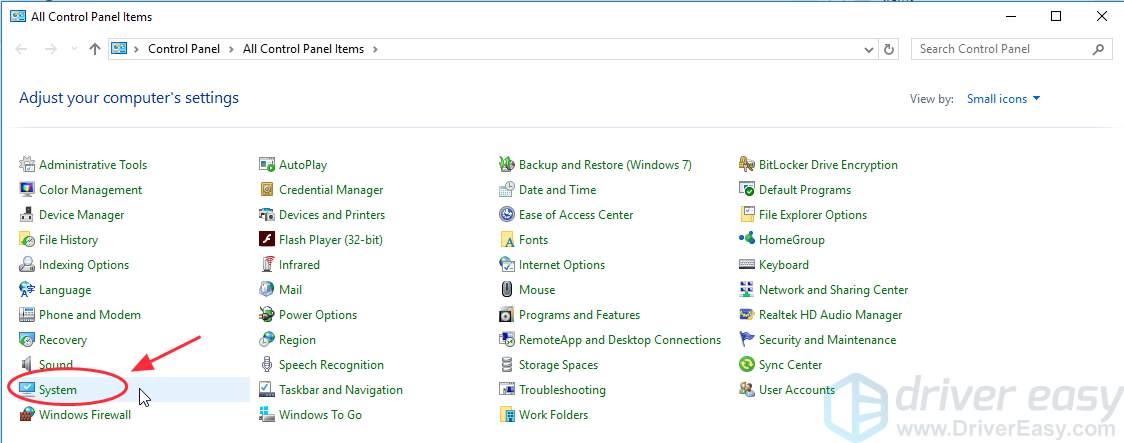

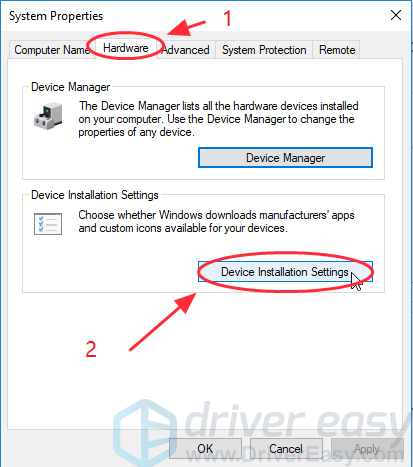
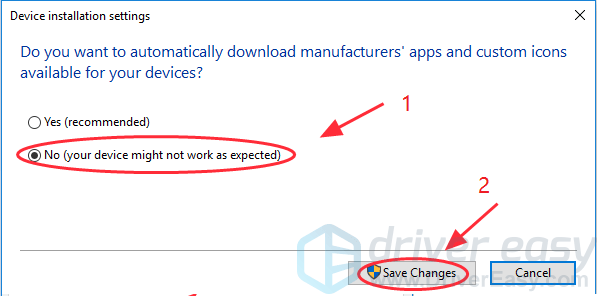
Bonus Tip
Windows Update updates your computer, so you can enhance your system performance and fix some issues. Since Windows 10 update has been disabled in your computer, you should consider updating your device drivers in your computer, with the attempt to keep your computer hardware in good condition and improve the performance. Tips: It’s possible there are problems with some drivers, as the outdated or missing drivers can cause problems as well. So you should keep your device drivers up to date. There are two ways to update your device drivers: manually and automatically. Update your drivers manually – You can update all available drivers manually ONE BY ONE until you pin down the exact driver at fault. Firstly you’ll have to go to the manufacturer’s website, search for the most recent correct driver for the devices. Be sure to choose only drivers that are compatible with your variant of Windows system versions. Then download & update them all by yourself.OR
Update your drivers automatically – If you are not familiar with playing around with drivers, it’s recommended to do it with Driver Easy. With Driver Easy, you don’t need to know exactly what system your computer is running, you don’t need to risk downloading and installing the wrong driver, and you don’t need to worry about making a mistake when installing. You can update your drivers automatically with either the FREE or the Pro version of Driver Easy. But with the Pro version it takes just 2 clicks (and you get full support and a 30-day money back guarantee): 1) Download and install Driver Easy. 2) Run Driver Easy and click the Scan Now button. Driver Easy will then scan your computer and detect any problem drivers. 3) Click the Update button next to a flagged device to automatically download and install the correct version of this driver (you can do this with the FREE version).
Or click Update All to automatically download and install the correct version of all the drivers that are missing or out of date on your system (this requires the Pro version – you’ll be prompted to upgrade when you click Update All).
3) Click the Update button next to a flagged device to automatically download and install the correct version of this driver (you can do this with the FREE version).
Or click Update All to automatically download and install the correct version of all the drivers that are missing or out of date on your system (this requires the Pro version – you’ll be prompted to upgrade when you click Update All).
 4) After updating, restart your computer to make it take effect.
4) After updating, restart your computer to make it take effect.
There are the helpful methods to stop Windows 10 update. Hope it works for you. If you have any questions, feel free to comment below and we will see what more we can do to help.
47
47 people found this helpful
62 Comments
Most Voted





